- 02 9712 1736
- [email protected]
- 212 Great North Road, Five Dock, NSW 2046
- Open 6 days from 7am
Wrist pain can have a variety of causes, ranging from minor wrist injuries to underlying medical conditions. This includes sprains, strains, tendinitis, tendinopathy, arthritis, ganglion cysts, wrist bursitis, carpal tunnel syndrome, nerve entrapments, and other medical conditions.
Wrist injuries, such as wrist sprains and strains result from overstretching ligaments and muscles. Tendinitis involves inflammation of tendons due to repetitive motions. Tendinopathy is the chronic degeneration or irritation of tendons.
Arthritis can affect the wrist joint and cause pain, swelling, and stiffness.
Ganglion cysts are fluid-filled sacs that form on tendons or joints. Wrist bursitis involves inflammation of bursae, which are fluid-filled sacs that sit between muscles, tendons, and bones to prevent friction between tissues.
Carpal tunnel syndrome occurs when the median nerve becomes compressed in the wrist. Nerve entrapment can also occur to other nerves including the ulnar nerve.
Fractures and broken bones in the wrist can result from falls or direct blows. Other medical issues like gout, Raynaud’s disease, and infections can also lead to wrist pain.

A wrist sprain occurs when the ligaments in the wrist are stretched or torn, usually due to sudden impact, twisting, or bending of the wrist, resulting in a wrist injury. Wrist sprains are associated with pain, swelling, bruising, and reduced range of motion in the affected wrist. A sudden impact, such as when taking a fall and landing on your hands and wrists may result in wrist sprains.
A wrist strain happens when the muscles or tendons in the wrist are overstretched or torn, usually due to repetitive motions or sudden excessive force applied to the wrist, resulting in a wrist injury.
Symptoms include pain, swelling, weakness, and difficulty moving the wrist. In the case where repetitive movement is the cause for wrist pain, tendinitis in the wrist typically develops over time with overuse of the tendons in the wrist. Activities like typing, using a computer mouse, or repetitive gripping can lead to irritation and inflammation of the tendons. Poor ergonomics and improper technique may also contribute to its development.
Tendinopathy in the wrist develops as a result of chronic degeneration or irritation of the tendons following repeat exacerbation and failure to allow the wrist to heal properly.

Falling on an outstretched hand can lead to a wrist fracture and severe pain.
Sudden and intense force placed on the wrist small joints when attempting to break the fall can exceed the strength of the bones, resulting in a fracture. Common fractures include distal radius fractures, where the end of the forearm bone on the thumb side (radius) near the wrist is fractured.
Along with the bone fracture, the ligaments, tendons, and surrounding soft tissues can also be damaged due to the sudden excessive force during the impact, resulting in additional pain and swelling.
After experiencing a fall on an outstretched hand, it is crucial to seek immediate medical attention. X rays or other imaging tests may be performed to diagnose or exclude a fracture. In the case of a positive finding, appropriate treatment, such as casting, splinting, or in severe cases, surgery, will be recommended to facilitate proper healing and relieve pain.
A complicating factor with a wrist fracture is blood supply to the area. Limited blood supply can slow down healing, leading to leading to longer periods of time in a wrist splint. This leads to an increase need for physical therapy post injury.
In the case of an injury associated with an open wound, it is also a good idea to monitor for risks of infection. An infection is often accompanied with high temperature or a fever. Seek medical attention if this happens.
Carpal tunnel syndrome is a common condition characterized by the compression or inflammation of the median nerve as it passes through the carpal tunnel in the wrist. The carpal tunnel is a narrow passageway formed by the small bones and ligaments in the wrist. It houses the nerve, along with the tendons that control finger movement. Carpal tunnel syndrome occurs when there is increased pressure or swelling within the carpal tunnel resulting in compression of the nerve.
Symptoms often start gradually and progress over time. Symptoms include hand and wrist pain, associated with numbness and tingling. Other symptoms such as weakness in the hand and clumsiness develop over time, making it difficult to grip objects or perform fine motor tasks like buttoning clothes or holding utensils.
Symptoms can disrupt sleep, causing individuals to wake up with numbness or tingling in their hands and wrists, prompting the need to shake or move them to ease symptoms.
The risk of developing carpal tunnel syndrome increases with repetitive hand and wrist movements or repetitive work such as typing, using vibrating tools, or playing musical instruments. If you suspect you have carpal tunnel syndrome, it is advisable to consult with a healthcare professional for an accurate diagnosis and appropriate management of your symptoms.

Rheumatoid arthritis is an autoimmune disease that primarily affects the joints, including those in the wrists. In an individual with rheumatoid arthritis, the body’s immune system mistakenly attacks the synovium, the lining of the joints, resulting in chronic inflammation, causing the synovium to thicken, leading to pain, swelling, stiffness, and potential joint deformities.
Individuals with rheumatoid arthritis may experience aching, throbbing, or sharp pain in the wrist joints. The affected wrist joints may become swollen, tender, and feel warm to the touch. Stiffness, particularly in the mornings or after periods of inactivity, can make it challenging to move the wrist freely.
In severe cases, inflammation and joint damage can cause deformities in the wrist.
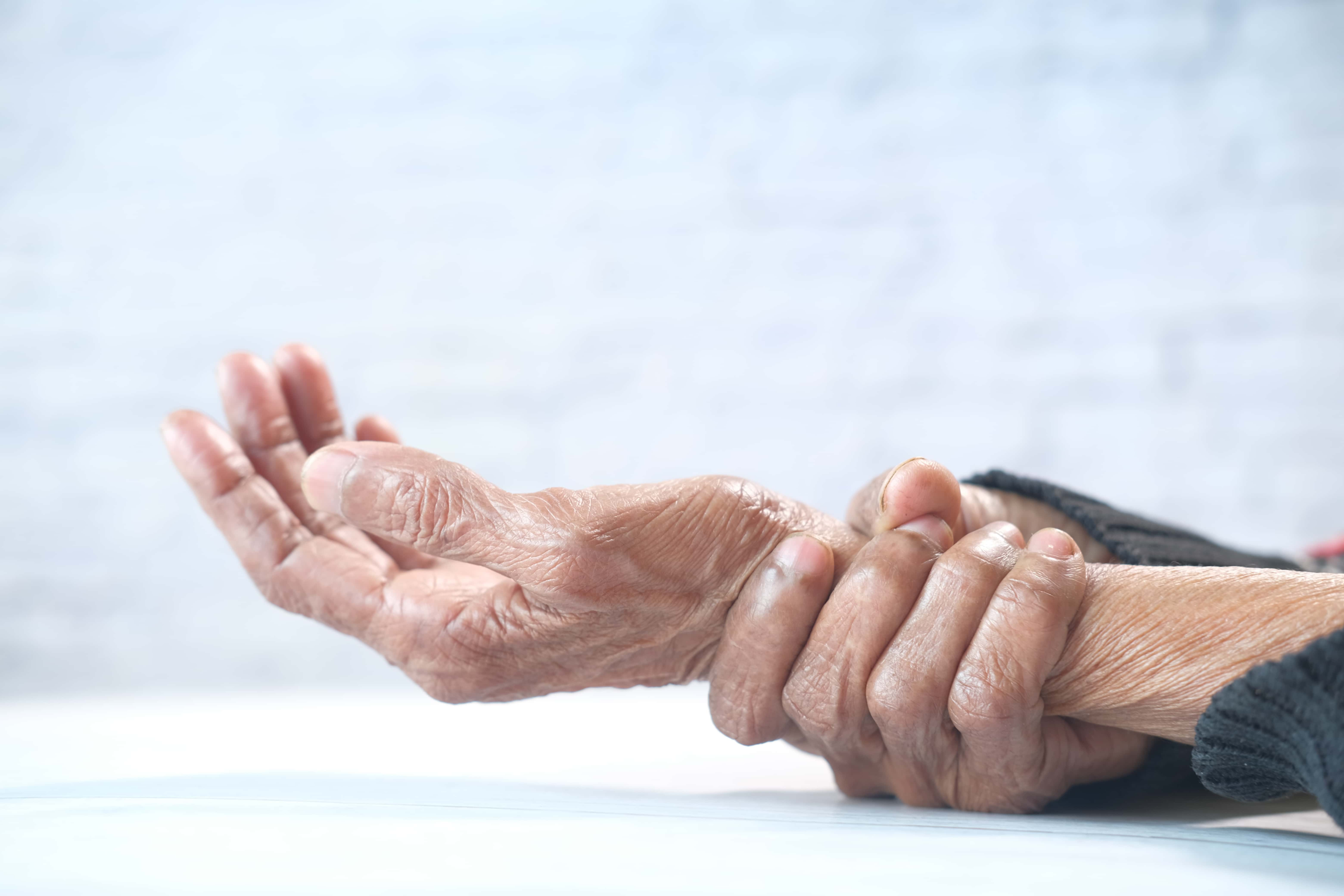
Psoriatic arthritis is another autoimmune disease that can affect the joints, leading to wrist pain. However, unlike rheumatoid arthritis, wrist pain may be accompanied by skin changes or nail abnormalities associated with psoriasis.
Gout is another form of arthritis caused by having too much uric acid resulting in formation of crystals in the joints. While gout typically affects the big toe, it can also involve other joints like the wrists. Gout-related wrist pain is characterized by sudden and intense episodes of inflammation, redness, swelling, and pain in the affected joint.
These painful episodes, known as gout attacks or flares, can be triggered by factors like dietary choices, alcohol consumption, or medications.
Osteoarthritis (OA) is a degenerative joint disease that can affect the wrist. As the cartilage in the joint deteriorates, friction between the bones increases, causing pain, stiffness, swelling, and reduced range of motion. Activities involving gripping, twisting, or repetitive movements can exacerbate the pain.
X rays can be used to determine if the source of your pain is arthritis.
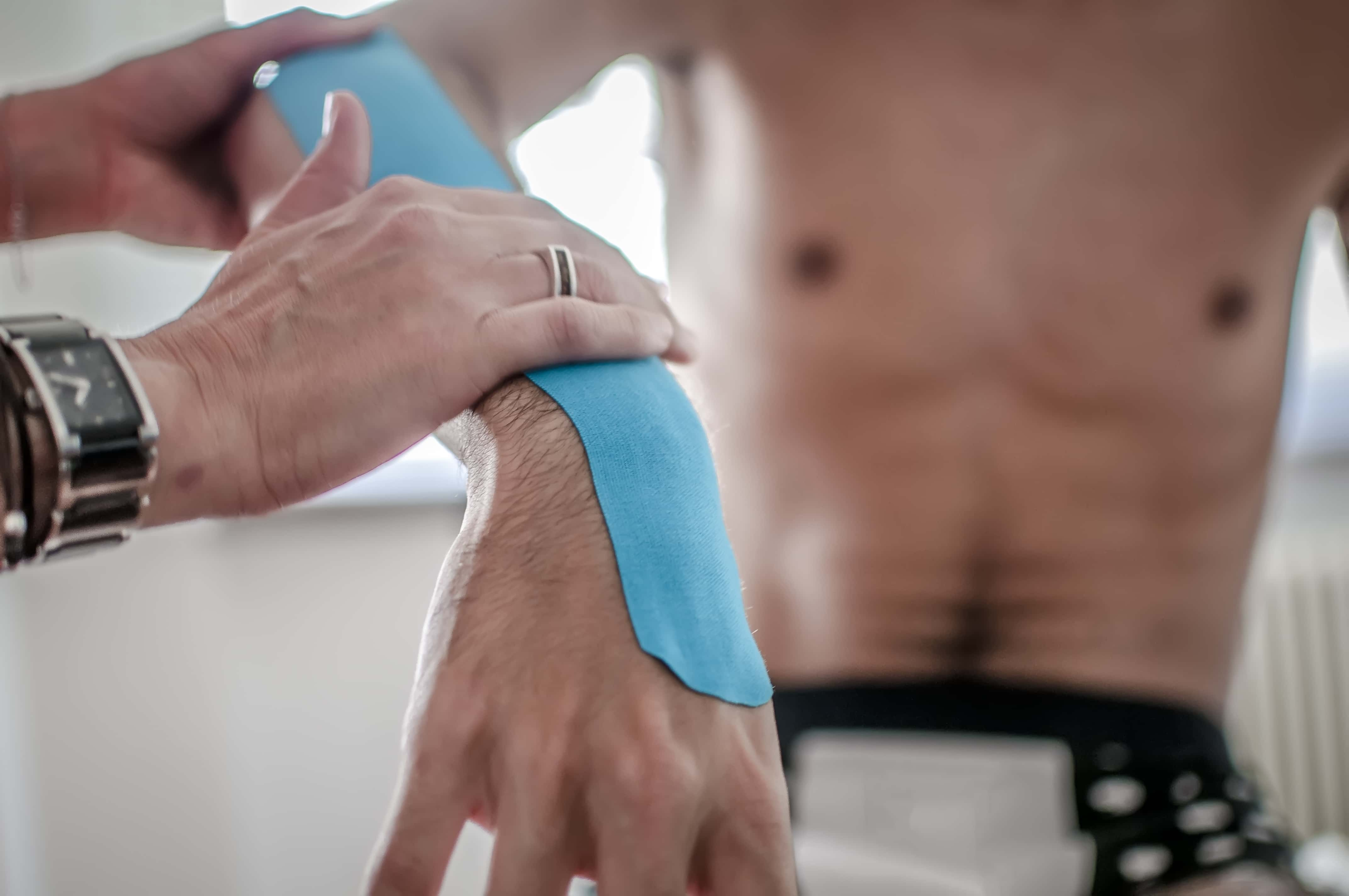
If the cause of your pain is a sprain or a strain from a recent injury, managing pain and swelling is key. Use an ice pack or frozen peas to reduce inflammation and ease pain. If repetitive strain is resulting in pain associated with tendinitis, it is also a good idea to take more regular breaks and allow the joints to rest.
If the cause of your pain is any of the other causes listed above, it is recommended to consult a healthcare professional to determine the exact cause and provide you with an appropriate treatment plan.
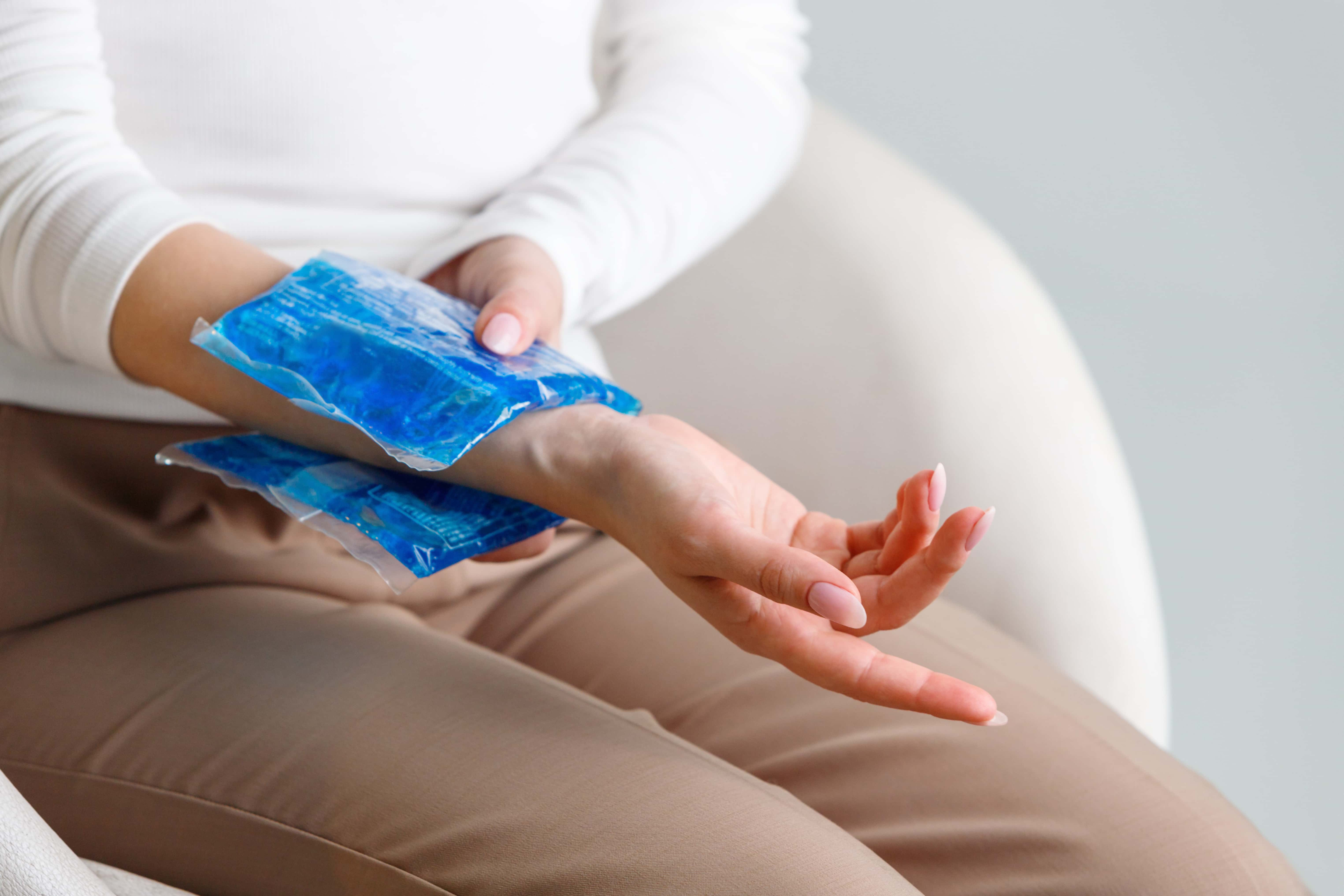
,
A wrist guard is a protective device worn to provide support and stability, especially during activities that put stress on the joint. It can be beneficial in managing wrist pain caused by various conditions, including sprains, strains, tendinitis, and repetitive stress injuries.
A wrist guard helps by immobilizing the joint and enforcing rest, reducing excessive movements and preventing further injury. It provides compression and warmth, which can alleviate pain and inflammation. By supporting the wrist, it can also help reduce strain on the tendons and ligaments.
It’s important to note that while wrist guards can provide temporary relief and support, they do not address the underlying cause of pain.
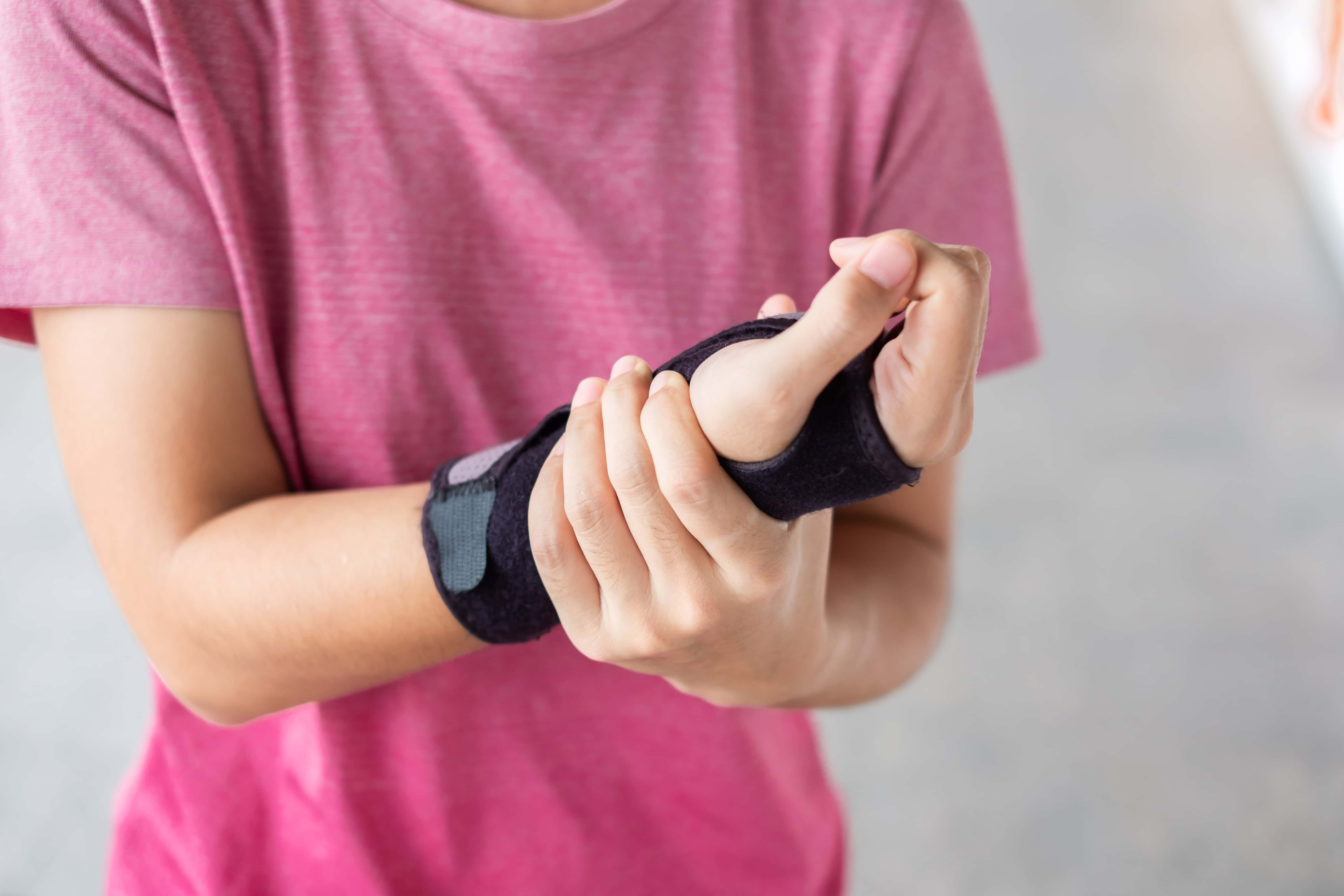
If the cause of your pain is a broken bone, you will need immediate medical attention.
An x ray or a magnetic resonance imaging (MRI) may be performed to determine the extent of the damage from the injury to the small bones in your hand, long bones in your forearm, and surrounding soft tissue and connective tissue.
You may be required to wear a wrist splint or cast to immobilise the joint. In severe cases, you may also require surgery.
Rest and rehabilitation will be key to restoring function post-surgery.
If the cause of your pain is carpal tunnel syndrome, a physical exam, early diagnosis, and treatments are crucial to prevent further nerve damage.
Nerve conduction studies may be performed to assess nerve function.
Treatment options may include wearing a wrist splint to immobilize the joint, lifestyle modifications to avoid repetitive movements and repetitive tasks, pain management through nonsteroidal anti-inflammatory drugs (NSAIDs), physical therapy, and corticosteroid injections.
In cases where conservative measures do not provide relief, surgery may be considered to release the pressure on the nerve.
If the cause of your pain is rheumatoid arthritis, osteoarthritis, or gout, treatment may include medications to control inflammation, physical therapy, splinting, and lifestyle modifications.
If the cause of your pain is osteoarthritis, treatment may include pain management, physical therapy, and lifestyle modification. In the case of chronic pain, your physical therapist will provide you with strengthening exercises to restore optimal function of the joint.
Five Dock Osteopathic and Chiropractic began as a local Burwood back pain clinic with expertise focused on Burwood back pain and general chiropractic care. Since taking the clinic over in 2002, Scott and his team have transformed the back pain clinic into a multi-disciplinary team focused on all neuromusculoskeletal health. These days if you have any issue you believe can be related to your muscle, joints or nervous system, then this is the team for you.
Scott and his team have developed treatment programs combining chiropractic, osteopathy, massage and exercises. Their approach is to look at your movement and how your brain is interpreting your movement. You experience symptoms such as pain, stiffness and inflammation when the information coming into your brain from your body is saying there is a problem. Your brain responds by giving you symptoms that will stop you from moving. More research shows the importance of remapping the brain and regulating the nervous system, when it comes to these types of problems. The team at Five Dock Osteo Chiro is at the leading edge of the best advances in care and will provide you the gold standard of care.
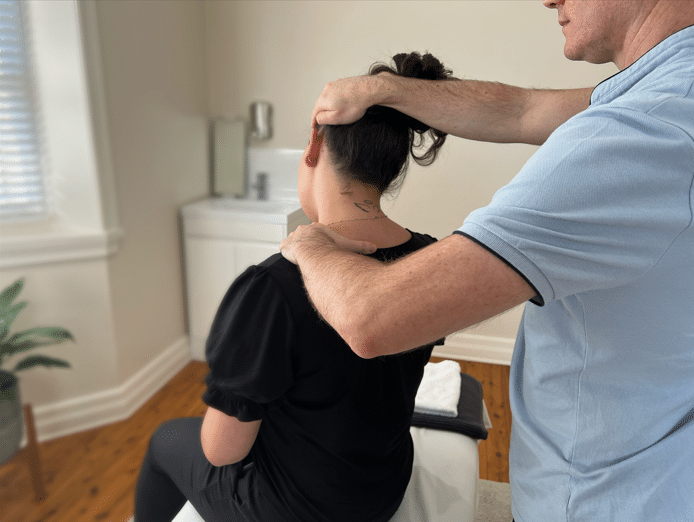
About
Five Dock Osteopathic & Chiropractic is located in Canada Bay, in Sydney’s Inner West. Servicing suburbs including Burwood, Croydon, Drummoyne, Five Dock, Haberfield, Concord, Abbotsford, Chiswick, Leichhardt, Wareemba, Russell Lea, Summer Hill, Strathfield.
Clinic hours
Monday, Tuesday, Thursday 7AM – 7PM
Wednesday, Friday 7AM – 5PM
Saturday 7AM – 2PM
Sunday Closed
Contact details
212 Great North Road, Five Dock, NSW 2046
Phone: 02 9712 1736
Fax : 02 9712 1736
Email : [email protected]